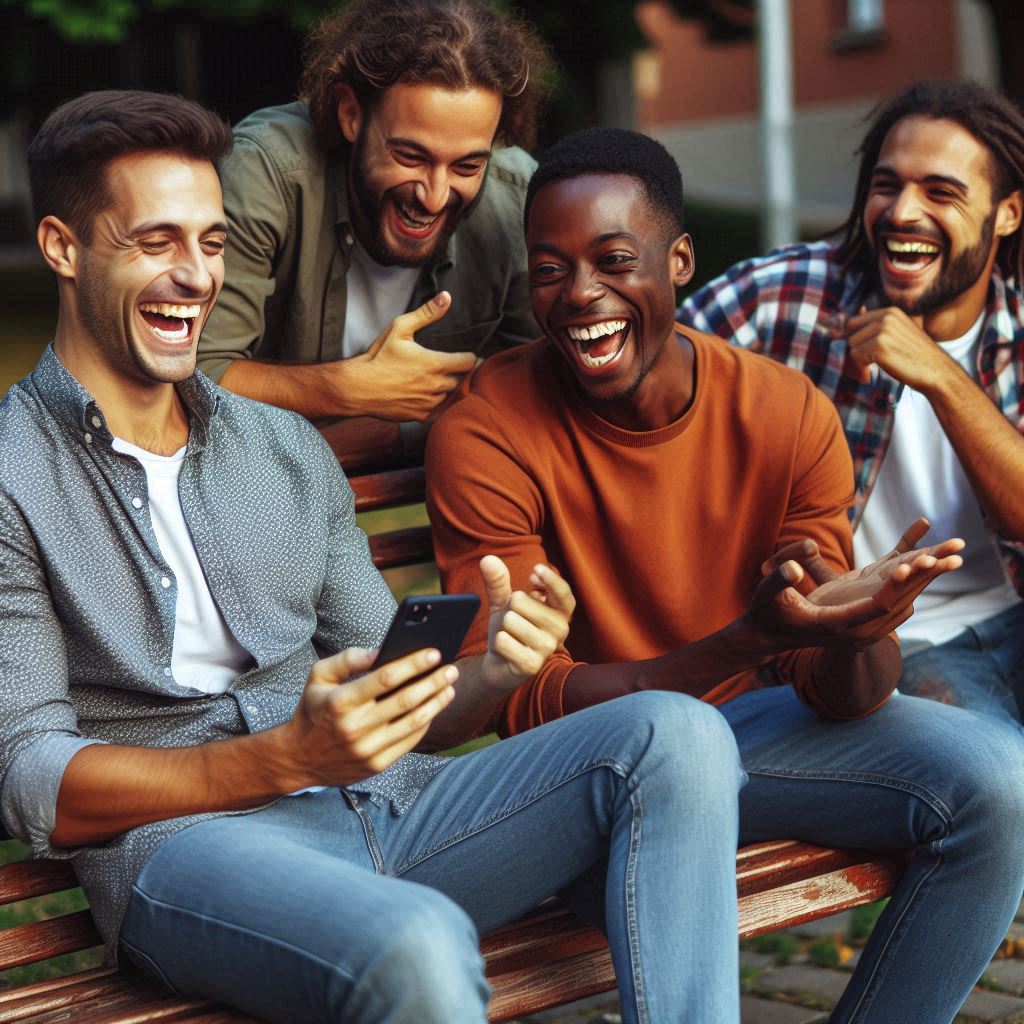Introduction
Love languages, as defined by Dr. Gary Chapman, represent how individuals express and receive love.
They include words of affirmation, acts of service, receiving gifts, quality time, and physical touch.
Understanding these languages enhances communication and strengthens relationships.
In today’s tech-driven world, we find ourselves navigating a new realm of affection.
Digital love languages emerge as we increasingly rely on technology for connection.
These languages adapt traditional expressions of love into the digital sphere, where messages, emojis, and virtual interactions prevail.
This blog explores the evolution of love languages in our tech-savvy culture.
We will examine how technology impacts our expressions of affection.
By delving into this topic, we aim to highlight the significance of adapting our love languages for meaningful digital relationships.
Defining Love Languages
Understanding love languages can transform our relationships.
These languages reveal how we express and receive affection.
Dr. Gary Chapman introduced the concept in his book, which has become widely popular.
He identified five primary love languages that help people connect with their partners more deeply.
Defining the Five Love Languages
The original five love languages are:
- Words of Affirmation: This language uses words to affirm and express love. Compliments, words of appreciation, and encouragement resonate strongly with those who favor this language.
- Acts of Service: For some, actions speak louder than words. Doing helpful tasks and providing assistance are ways to show love through acts of service.
- Receiving Gifts: This language emphasizes the thoughtfulness behind giving gifts. It’s not about the monetary value but rather the sentiment and effort involved.
- Quality Time: This language values undivided attention. Engaging in meaningful conversations or shared activities strengthens the connection between partners.
- Physical Touch: This language highlights the importance of physical closeness. Touch, hugs, and affectionate gestures are how these individuals express and receive love.
Each love language plays an essential role in how people form connections.
Recognizing these differences can significantly affect how partners interact.
When individuals understand their love languages, they can communicate more effectively.
Misunderstandings often arise when partners unknowingly speak different love languages.
Addressing this difference can foster stronger relationships.
Importance of Understanding Love Languages for Personal Relationships
Understanding love languages is crucial for several reasons:
- Enhanced Communication: Knowing your partner’s love language promotes open dialogue. It helps express feelings clearly, fostering deeper intimacy.
- Conflict Resolution: Miscommunication often leads to conflicts. Identifying love languages can reduce misunderstandings and prevent unnecessary arguments.
- Personal Growth: Learning about love languages encourages self-reflection. Partners can discover their needs and how to meet each other’s expectations.
- Greater Emotional Connection: By speaking your partner’s love language, you create a solid emotional bond. Partners feel valued and understood, nurturing a healthier relationship.
- Increased Relationship Satisfaction: Ultimately, understanding love languages leads to greater happiness. Partners who feel loved and appreciated are more engaged and dedicated.
Transitioning Love Languages into the Digital Realm
In today’s tech-driven society, love languages have evolved.
The digital age offers various new ways to express love and affection.
While traditional methods remain vital, technology allows us to enhance our connections.
Here’s how each love language can transition into the digital world:
Words of Affirmation
- Text messages and digital notes can convey quick affirmations.
- Social media posts can celebrate your partner’s achievements.
- Voice messages allow for a personal touch in affirmations.
Acts of Service
- Scheduling reminders can help your partner stay organized.
- Delivering groceries or meals through apps is a practical gesture.
- Setting up video chats can foster emotional support during stressful times.
Receiving Gifts
- Surprise gift deliveries can deepen connections amid distance.
- Digital gift cards provide flexible options for loved ones.
- Creating custom playlists or e-cards shows thoughtfulness.
Quality Time
- Scheduling regular video calls helps maintain contact.
- Playing online games together enhances shared experiences.
- Watching movies simultaneously using streaming services creates bonding moments.
Physical Touch
- Sending virtual hugs or kisses through emojis expresses affection.
- Sharing videos or photos of physical moments can bridge distances.
- Planning visits showcases commitment to maintaining physical closeness.
As technology continues to evolve, love languages will too.
It is essential to adapt. By embracing these changes, couples can grow even closer.
There are countless digital avenues for expressing love today.
However, understanding the essence of each love language remains vital.
Ultimately, mastering love languages allows for deeper relationships.
These essential methods of expression connect us in a meaningful way.
By recognizing and communicating love effectively in this digital age, couples can build lasting bonds.
Understanding and adapting love languages will empower individuals to enjoy richer relationships, both online and offline.
It’s time to embrace the fusion of love languages and technology, enhancing our connections as we move forward.
Read: Smart Home Devices Enhancing Romantic Connections
The Impact of Technology on Communication
Technology profoundly changes how we communicate.
Put Your Tech Company on the Map!
Get featured on Nicholas Idoko’s Blog for just $50. Showcase your business, boost credibility, and reach a growing audience eager for tech solutions.
Publish NowIt reshapes our interactions, making them more immediate yet often more complex.
As we navigate an increasingly digital world, the dynamics of communication evolve.
Traditional communication methods fade as new forms emerge.
This transformation affects personal relationships, changing how we express love and affection.
Overview of How Technology Has Changed Communication Dynamics
In the past, people relied on face-to-face conversations, letters, and phone calls
These forms of communication fostered deeper connections through shared experiences.
Now, we engage through screens, often prioritizing speed over substance.
Here are key ways technology has modified communication dynamics:
- Instant Gratification: Messages reach recipients within seconds.
- Asynchronous Communication: People interact without needing to be present simultaneously.
- Diverse Channels: From social media to instant messaging, countless options exist for connection.
- Increased Accessibility: People communicate across time zones and geographical barriers effortlessly.
- Visual Communication: Emojis and GIFs supplement written messages with emotions and humor.
These advancements create a landscape where connections are more varied and accessible.
Social media platforms, text messaging, and video calls emerge as dominant forms.
Each medium influences how we convey affection and understand others.
This shift warrants a closer examination of specific communication platforms.
Examples of Social Media, Text Messaging, and Video Calls
Social media serves as a primary communication tool.
Platforms like Facebook, Instagram, and Twitter allow users to share thoughts, experiences, and emotions.
They create a public space for personal expression.
Here are notable characteristics of social media communication:
- Public and Private Spaces: Users can choose to share openly or in private messages.
- Curated Personas: People craft their online identities, often presenting idealized versions of themselves.
- Interaction Through Likes and Shares: Engagement is quantified and visible to others.
- Community Building: Social media fosters connections around shared interests and experiences.
Text messaging offers immediate communication without the need for face-to-face interaction.
This form of communication has distinct advantages and disadvantages:
- Convenience: People can communicate anytime and anywhere, enhancing connectivity.
- Character Limitations: The brevity can lead to misunderstandings and lack of emotional depth.
- Accessibility Options: Voice messaging and predictive typing ease communication barriers.
- Group Chats: They facilitate conversations among multiple parties, enhancing social connections.
Video calls introduce a personal touch that text and social media cannot achieve alone.
Platforms like Zoom, Skype, and FaceTime allow face-to-face interactions regardless of distance.
Here are some notable aspects:
- Visual Cues: Non-verbal communication like facial expressions and gestures enhance understanding.
- Sense of Presence: Video connections provide a sense of closeness, even across distances.
- Shared Experiences: Virtual gatherings can mimic real-life interactions, bridging physical gaps.
- Accessibility for All: Technology improves connectivity for individuals with mobility challenges.
While these communication platforms enhance connectivity, they are not without implications.
Understanding digital communication’s influence on emotional connection becomes essential.
Discussion on the Implications of Digital Communication on Emotional Connection
The shift to digital communication introduces multiple emotional impacts.
People experience a range of feelings interacting through screens.
Here are some positive and negative implications:
- Enhanced Engagement: People can share more frequently and interact instantly.
- Broadened Networks: Individuals connect with diverse communities and build long-distance relationships.
- Reduced Anxiety for Introverts: Online interactions can feel less daunting than face-to-face conversations.
- Loss of Intimacy: Digital exchanges can lack depth, leading to superficial conversations.
Moreover, non-verbal cues are often lost in text messages, leading to misunderstandings.
Detached communication can create feelings of loneliness, despite being constantly “connected.” People frequently misinterpret messages without visual context.
Below are additional implications to consider:
- Time Disparity: Delayed responses can create anxiety and insecurity in relationships.
- Digital Overload: Constant notifications can distract from real-life interactions.
- Comparison Culture: Social media encourages negative comparisons, impacting self-esteem and connection quality.
- Increased Miscommunication: Tone and intent can be lost in text, leading to conflicts.
Balancing digital communication with direct interaction may offer a solution.
Incorporating traditional methods into our digital lives helps maintain emotional closeness.
People should consciously engage in face-to-face conversations whenever possible.
Authentic connections often emerge from such encounters.
Overall, technology significantly impacts communication dynamics.
While it offers numerous advantages, it also presents challenges.
Put Your Tech Company on the Map!
Get featured on Nicholas Idoko’s Blog for just $50. Showcase your business, boost credibility, and reach a growing audience eager for tech solutions.
Publish NowRecognizing these changes allows us to navigate digital relationships mindfully.
Embracing a blend of digital and traditional communication can foster deeper emotional connections in the age of technology.
Read: The Role of AI in Conflict Resolution for Modern Couples
Exploring Digital Love Languages
In a world increasingly driven by technology, love finds new ways to express itself.
We often hear about love languages, a concept defining how individuals prefer to give and receive affection.
With the rise of digital communication, these love languages have transformed into digital formats.
Definition and Examples of Digital Love Languages
Digital love languages encompass the ways we communicate affection through digital mediums.
They reflect our emotional connections in an online environment.
Just like traditional love languages, these digital expressions can nurture relationships and foster closeness.
Examples of digital love languages include:
- Text messages filled with kindness
- Sharing favorite songs through music apps
- Sending digital art or creative creations
- Participating in online games together
- Facetime calls filled with laughter and conversation
How Traditional Love Languages Translate into Digital Formats
Let’s explore how the five traditional love languages adapt to our digital reality.
Each translation allows individuals to connect with their partners, regardless of physical distance.
Words of Affirmation: Emojis, GIFs, and Memes
In the realm of digital communication, words of affirmation take on creative forms.
Emojis convey emotions succinctly, while GIFs add humor and personality.
Memes serve as playful reminders of inside jokes or shared experiences.
Examples include:
- Sending a heart emoji after a heartfelt message
- Using a funny GIF to lighten a serious conversation
- Creating a meme that portrays a shared moment
This digital repertoire allows couples to express their feelings authentically and joyfully.
Acts of Service: Online Assistance and Virtual Gifts
Acts of service manifest in thoughtful digital acts.
Busy lives often hinder physical assistance, but online support can still present itself.
Helping someone with an online task can show care and thoughtfulness.
Examples include:
- Offering to research something for your partner
- Completing an online chore together, like planning a trip
- Sending a virtual gift like a surprise subscription
These actions showcase care and support in a tech-driven world.
Quality Time: Virtual Date Ideas and Gaming Together
Quality time remains essential, even in a digital age.
Couples can still prioritize togetherness, whether through virtual dates or gaming.
Spending time together becomes about the experience and connection.
Ideas for virtual dates include:
- Watching a movie together on streaming platforms
- Cooking the same recipe while video chatting
- Playing online games that both partners enjoy
This dedicated time strengthens the bond between partners, despite the physical distance.
Receiving Gifts: E-gift Cards and Digital Subscriptions
Receiving gifts takes on a modern twist in the digital world.
Physical presents might bear challenges, but digital gifts hold equal significance.
E-gift cards allow choices tailored to individual preferences.
Various examples include:
- Sending an e-gift card for a favorite coffee shop
- Offering digital subscriptions to streaming services
- Gifting an audiobook or e-book for leisurely reading
These thoughtful gestures convey love and appreciation effectively.
Physical Touch: Virtual Reality or Augmented Reality Experiences
While physical touch may seem lost in the digital realm, technology closes that gap.
Virtual reality and augmented reality experiences can simulate closeness.
These tools let individuals connect in immersive ways.
Put Your Tech Company on the Map!
Get featured on Nicholas Idoko’s Blog for just $50. Showcase your business, boost credibility, and reach a growing audience eager for tech solutions.
Publish NowInnovative options include:
- Sharing a VR experience that transports you both to different worlds
- Participating in online classes that cultivate shared interests
- Using AR apps to create fun and interactive moments together
These experiences emphasize the emotional hug of affection through technology.
The emergence of digital love languages highlights human adaptability.
In navigating relationships, technology offers countless ways to express affection.
Whether through heartfelt messages or immersive experiences, love endures in the digital age.
Understanding how these love languages manifest creates stronger connections.
Embracing change can lead to fresh expressions of love.
As we continue to explore these digital avenues, our relationships can flourish.
Read: 5G Networks Revolutionizing Long-Distance Relationships

The Role of Social Media in Expressing Affection
Social media plays a pivotal role in how people express affection today.
It serves as a platform for sharing moments, thoughts, and feelings.
With the rise of platforms like Instagram and Facebook, love languages have transformed.
Let’s analyze how these platforms facilitate the expression of love and connection.
Examination of Platforms like Instagram and Facebook
Instagram and Facebook dominate social media interactions.
Each platform caters to different types of engagement.
Here’s a closer look:
- Instagram: Focuses on visual content. Users share photos and videos, making it ideal for showcasing relationships.
- Facebook: Encourages more comprehensive updates. Users share status updates, photos, events, and thoughts.
- Snapchat: Provides ephemeral content. Users send pictures and videos that disappear, fostering spontaneous affection.
- Twitter: Enables quick, verbal expressions of love. Users can share sentiments using tweets that convey feelings succinctly.
Each platform creates a unique space for expressing affection.
Social media enables users to articulate their feelings in various ways.
How Social Media Serves as a Tool for Love Language Expression
Social media functions as a rich tapestry for expressing love languages.
The digital landscape allows people to communicate affection meaningfully.
Here are some prominent ways it enhances love language expression:
- Words of Affirmation: Users post supportive notes, write heartfelt captions, and share affirming messages.
- Acts of Service: Individuals can share posts showcasing thoughtful gestures, like surprise dates or helping hands.
- Receiving Gifts: Users can highlight thoughtful presents shared in photos or posts, showcasing what matters.
- Quality Time: Platforms allow for the sharing of moments together, whether through live streams or photo albums.
- Physical Touch: Users can share images, videos, or stories that highlight moments of physical connection.
These expressions foster connections, even in a digital environment.
They cater to different love languages effectively, allowing for unique interactions.
Public Versus Private Displays of Affection
Social media creates a distinct line between public and private displays of affection.
These two aspects can significantly influence how love languages are expressed.
Public Displays of Affection (PDA)
Public displays of affection on social media can be captivating and engaging.
Here are their main features:
- Visibility: Public affection increases visibility. Others witness moments that strengthen bonds.
- Validation: Likes and comments provide validation, reinforcing the relationship’s significance.
- Connection: Other users can connect with shared experiences, fostering a sense of community.
- Inspiration: Public affection can inspire others to express their sentiments openly.
However, overexposure can lead to negative feelings.
Boundaries are essential in determining what to share publicly.
Private Displays of Affection
Private displays of affection carry their unique importance.
They often take place in direct messages or personal conversations.
Here’s how they differ from public expressions:
- Intimacy: Private messages foster deeper intimacy between partners.
- Authenticity: These moments feel more genuine, leading to a better emotional connection.
- Personalization: Users customize their expressions, sharing specific memories or feelings uniquely.
- Prevents Misinterpretation: Private communication avoids potential misunderstandings that public posts may invite.
Both public and private displays carry weight in fostering affection.
Users should navigate their choices, balancing public and private expressions.
Digital platforms reshape love languages across generations.
Put Your Tech Company on the Map!
Get featured on Nicholas Idoko’s Blog for just $50. Showcase your business, boost credibility, and reach a growing audience eager for tech solutions.
Publish NowWith widespread access to social media, people can express their affections in innovative ways.
Social media serves as a dynamic avenue for sharing love, whether publicly or privately.
As relationships evolve, how we demonstrate affection continues to transform.
Each platform adds depth and nuance to our interactions, providing a rich canvas for love.
By understanding these dynamics, individuals can effectively communicate their feelings in the digital age.
Ultimately, the essence of love remains unchanged; only the mediums through which we express it have evolved.
Read: Biometric Sensors and Love: How Tech Tracks Emotional Bonds
Challenges of Digital Love Languages
In the digital era, expressing love through various platforms presents unique challenges.
Miscommunication often arises when people rely on text, emojis, and social media updates.
These challenges can lead to misunderstandings that may affect the relationship’s foundation.
Exploring Miscommunication and Misunderstandings in Digital Expressions of Love
Digital communication lacks physical presence, complicating emotional exchanges.
The absence of vocal tone and body language can distort intentions.
For example, a simple text may come off as cold or uninterested.
- Textual Nuances: Text messages often lack context. A message meant to be playful could be interpreted as sarcastic or rude.
- Emojis and Symbols: While emojis help convey feelings, they can also confuse. What one person finds endearing, another might see as inappropriate.
- Timing Issues: Delayed responses can heighten anxiety. Partners may feel undervalued or ignored, leading to conflict.
- Social Media Misinterpretations: Posts intended to show affection can be misunderstood. Public acknowledgments can feel obligatory rather than heartfelt.
Issues Related to Privacy, Oversharing, and Digital Footprints
Privacy becomes a massive concern when sharing love digitally.
Oversharing can lead to discomfort or breach of privacy.
Partners often navigate the fine line between sharing memorable moments and maintaining boundaries.
- Data Privacy: Messages and photos stored online may become accessible to unintended audiences. This intrusion can damage trust between partners.
- Oversharing Risks: Constantly updating social media can invite scrutiny. Reflecting personal dynamics online may invite unwanted opinions from others.
- Digital Footprints: Every shared image or message leaves a trace. These digital footprints can reveal personal information that partners may not want public.
- Changing Platforms: New apps emerge constantly, bringing fresh challenges. Each platform has its own privacy settings and norms, complicating how love is expressed.
The Potential Impact of Digital Distractions on Relationships
Digital distractions can negatively affect how couples connect.
Constant notifications interrupt conversations.
These distractions can hinder genuine interactions, decreasing the quality of the relationship.
- Attention Fragmentation: The average person checks their phone numerous times daily. This behavior diverts attention during meaningful moments.
- Social Media Comparisons: Couples may compare their relationships to what they see online. These unrealistic standards can create dissatisfaction and jealousy.
- Game and App Consumption: Spending excessive time on apps can take away from quality time together. Partners may feel neglected and grow distant.
- Virtual Misconnections: Digital distractions can create physical disconnection. Partners may feel like they are sharing space without sharing experiences.
In fact, while digital love languages have transformed how we express affection, they come with challenges.
Miscommunication, privacy concerns, and distractions can all adversely affect relationships.
Understanding these challenges enables couples to navigate the digital landscape thoughtfully.
Finding balance is essential.
Partners should prioritize meaningful interactions while embracing the benefits of technology.
By fostering open communication, couples can strengthen their bonds in the ever-evolving digital world.
Balancing Digital and Physical Affection
In our digital age, technology influences our relationships significantly.
Social media, texting, and instant messaging serve as vital communication tools.
However, relying solely on these platforms can hinder genuine connections.
Balancing digital and physical affection fosters deeper intimacy.
Physical interactions, like hugging and holding hands, activate hormones like oxytocin.
This promotes bonding and trust between partners.
Digital expressions, such as thoughtful texts and emoji-filled conversations, also play crucial roles.
They add levity and immediacy to affection.
Neglecting physical interactions in favor of digital alternatives may lead to misunderstandings.
Additionally, it can create feelings of loneliness.
Put Your Tech Company on the Map!
Get featured on Nicholas Idoko’s Blog for just $50. Showcase your business, boost credibility, and reach a growing audience eager for tech solutions.
Publish NowMany people crave the feel of a warm touch more than a digital message.
Hence, finding a balance is essential for nurturing healthy relationships.
Social media can magnify insecurities about relationships.
People may present curated versions of their lives online.
This can lead to comparison and self-doubt.
Having regular physical interactions can help alleviate these feelings.
When partners communicate face-to-face, it strengthens their bonds and reassures love and commitment.
To create a stable foundation for your relationship, integrate both forms of affection.
Prioritize in-person interactions without discarding the advantages of digital communication.
Tips for Creating a Harmonious Blend of Digital and Physical Love Languages
Creating a harmonious blend of digital and physical love languages requires intentional effort.
Here are several tips to achieve that balance effectively:
- Establish Regular Communication: Arrange times to know each other better through both digital and in-person means. Consistent communication fosters emotional connection.
- Set Boundaries: Discuss your preferences when it comes to texting and social media interactions. Establish norms that keep both partners comfortable and engaged.
- Plan Dates: Make it a point to schedule in-person dates. Whether it is a dinner date or a simple walk, prioritize moments together.
- Use Technology Mindfully: Share moments through photos and videos. This helps maintain a connection even when apart, but don’t let it replace in-person time.
- Express Affection Digitally: Send loving texts or voice notes. Small gestures hold power and keep the spark alive when you are apart.
- Mix Forms of Affection: Plan activities that combine both forms. For instance, cook together while video calling. This creates novel experiences that make memories.
- Practice Active Listening: Whether you converse digitally or in-person, paying full attention is crucial. Engage actively in conversations to strengthen connections.
Finding moments to connect using technology can enrich your relationship.
However, ensure that digital interactions enhance rather than replace physical closeness.
How to Effectively Communicate Preferences with Partners
Clear communication is key to building successful relationships.
Discussing your preferences around affection strengthens understanding.
Here are ways to foster that conversation:
- Be Honest: Share your feelings openly. Let your partner know what makes you feel loved and appreciated.
- Encourage Sharing: Give your partner space to express their preferences. Mutual understanding grows through open dialogue.
- Use “I” Statements: Frame thoughts with “I” statements, like “I feel loved when you text me.” This reduces defensiveness.
- Choose the Right Time: Pick a comfortable moment for the conversation. Avoid stressful times to ensure an open discussion.
- Be Patient: Adjusting to each other’s love languages takes time. Patience helps as you navigate changes together.
- Practice Empathy: Understand your partner’s needs may differ. Approach conversations with compassion, not judgment.
- Check In Regularly: Make a habit of checking how your partner feels about your expressions of love.
Establishing clear communication builds a deeper emotional connection.
When both partners express their needs, it strengthens mutual understanding.
While digital affection can’t replace physical presence, finding balance is key.
Strive to integrate both forms of affection in your relationship.
Physical touch and digital expressions, like sweet messages, enhance intimacy and connection.
Regularly revisiting your preferences ensures a thriving relationship in the digital age.
By nurturing both digital and physical expressions of love, you create a balanced, fulfilling partnership.
This combination fosters joy and intimacy, no matter the medium.
Future of Love Languages in a Tech-Driven World
As technology continues to evolve, so does the way we express and understand love.
The future holds intriguing possibilities for love languages.
Advancements in artificial intelligence (AI), virtual reality (VR), and social media could dramatically transform how we connect emotionally.
Here are several predictions on how these technologies may shape love languages:
Predictions on Advancing Technology
- Enhancement of Communication: AI chatbots will facilitate emotional conversations, bridging gaps in communication.
- Virtual Reality Experiences: VR can create immersive experiences, allowing couples to spend quality time together, regardless of distance.
- Personalized Relationship Assistants: AI will help partners understand each other’s love languages through tailored insights.
- Augmented Reality (AR) Interactions: AR could enhance physical gestures, adding layers of meaning to expressions of love.
- Social Media Influence: Social platforms will shape perceptions of affection, redefining how love languages are enacted.
Each of these advancements has the potential to create new dimensions in how we express love.
For example, augmented reality could help couples visualize shared experiences, like vacations or important events, while physically apart.
This technological integration can deepen emotional connections.
Impact of Generational Differences
Generational differences significantly influence how we perceive and express affection.
Different age groups grow up with distinct experiences and exposure to technology.
These factors shape their love languages in unique ways.
Here we delve into how various generations interpret love:
Put Your Tech Company on the Map!
Get featured on Nicholas Idoko’s Blog for just $50. Showcase your business, boost credibility, and reach a growing audience eager for tech solutions.
Publish Now- Baby Boomers: This generation often values face-to-face communication and physical touch, preferring traditional expressions of love.
- Generation X: Gen Xers balance traditional love languages with emerging digital communication methods. They appreciate texts and emails, alongside in-person connections.
- Millennials: Known for embracing technology, Millennials rely heavily on social media and texting to express affection. They often prioritize emotional connection over physical presence.
- Generation Z: Gen Z incorporates a blend of digital and traditional love languages. They heavily utilize platforms like TikTok and Instagram to share their love stories and connect with partners.
Understanding these generational differences is crucial for effective communication in relationships.
Couples should acknowledge how their backgrounds influence their expressions of love.
Awareness breeds empathy, allowing partners to bridge gaps in understanding.
Need for Adaptability in Relationships
The rapid advancement of technology necessitates constant adaptability in relationships.
As love languages evolve, couples must remain open to change.
Here are some reasons why adaptability is vital:
- Technological Integration: As couples begin using AI apps or VR experiences, adaptability will help in integrating these tools into their love lives.
- Communication Styles: Partners may need to adjust their communication methods as preferences shift over time.
- Emotional Expectations: Technology can create new expectations for immediacy in emotional responses. Understanding this dynamic is essential.
- Social Media Pressure: The online world can impact personal relationships. Couples must navigate these external pressures while maintaining their affection.
- Interpersonal Dynamics: As new love languages emerge, emotional connections may change. Adaptability allows couples to grow together.
Flexibility in relationships fosters resilience.
Couples who adapt to changing love languages often experience stronger connections.
They may find themselves appreciating the nuances of technology-enhanced affection.
In our tech-driven world, love languages will continue to evolve.
The intersection of technology and emotional connection presents both challenges and opportunities.
Couples must navigate generational differences to foster understanding.
Moreover, adaptability will become essential in maintaining love amidst rapid change.
As we embrace the future, let’s remain committed to nurturing our relationships.
We can learn from one another, leveraging technology to enrich our emotional connections.
By doing so, we ensure that love languages thrive, even in the face of inevitable change.
Conclusion
Recap of the significance of understanding digital love languages
Understanding digital love languages is crucial in today’s tech-driven society.
These languages shape how we express and interpret affection online.
As relationships evolve, digital communication plays a central role in our connections.
Recognizing your love language can enhance your digital interactions.
Whether it’s through emojis, texts, or social media posts, these expressions matter.
They help clarify intentions and foster deeper emotional connections.
Encouragement to explore their love languages in the digital context
We encourage readers to explore their own love languages within the digital context.
Reflect on how you communicate love online.
Consider what makes you feel valued and cherished in your digital exchanges.
As technology evolves, so do our methods of loving.
Our relationships can flourish in this new landscape if we embrace these changes.
Understanding digital love languages allows us to navigate this landscape with confidence and clarity.
As we move forward, remember that love is not confined to physical interactions.
The digital realm offers endless opportunities for connection and expression.
Embrace these opportunities to cultivate meaningful relationships.
Final thoughts on the evolution of love in a technology-oriented world
In a technology-oriented world, adaptability is essential.
Our ability to express affection in various forms enhances our emotional lives.
When we understand and articulate our digital love languages, we build stronger bonds.
The digital age reshapes our understanding of love.
Put Your Tech Company on the Map!
Get featured on Nicholas Idoko’s Blog for just $50. Showcase your business, boost credibility, and reach a growing audience eager for tech solutions.
Publish NowBy recognizing and utilizing our digital love languages, we can enrich our connections.
This exploration will lead to healthier relationships and deeper emotional resonance.
Before You Go…
Hey, thank you for reading this blog post to the end. I hope it was helpful. Let me tell you a little bit about Nicholas Idoko Technologies.
We help businesses and companies build an online presence by developing web, mobile, desktop, and blockchain applications.
We also help aspiring software developers and programmers learn the skills they need to have a successful career.
Take your first step to becoming a programming expert by joining our Learn To Code academy today!
Be sure to contact us if you need more information or have any questions! We are readily available.
[E-Books for Sale]
1,500 AI Applications for Next-Level Growth: Unleash the Potential for Wealth and Innovation
$5.38 • 1,500 AI Applications • 228 pages
Are you ready to tap into the power of Artificial Intelligence without the tech jargon and endless guesswork? This definitive e-book unlocks 1,500 real-world AI strategies that can help you.
See All 1,500 AI Applications of this E-Book
750 Lucrative Business Ideas: Your Ultimate Guide to Thriving in the U.S. Market
$49 • 750 Business Ideas • 109 pages
Unlock 750 profitable business ideas to transform your future. Discover the ultimate guide for aspiring entrepreneurs today!
See All 750 Business Ideas of this E-Book
500 Cutting-Edge Tech Startup Ideas for 2024 & 2025: Innovate, Create, Dominate
$19.99 • 500 Tech Startup Ideas • 62 pages
You will get inspired with 500 innovative tech startup ideas for 2024 and 2025, complete with concise descriptions to help you kickstart your entrepreneurial journey in AI, Blockchain, IoT, Fintech, and AR/VR.
We Design & Develop Websites, Android & iOS Apps
Looking to transform your digital presence? We specialize in creating stunning websites and powerful mobile apps for Android and iOS. Let us bring your vision to life with innovative, tailored solutions!
Get Started Today




